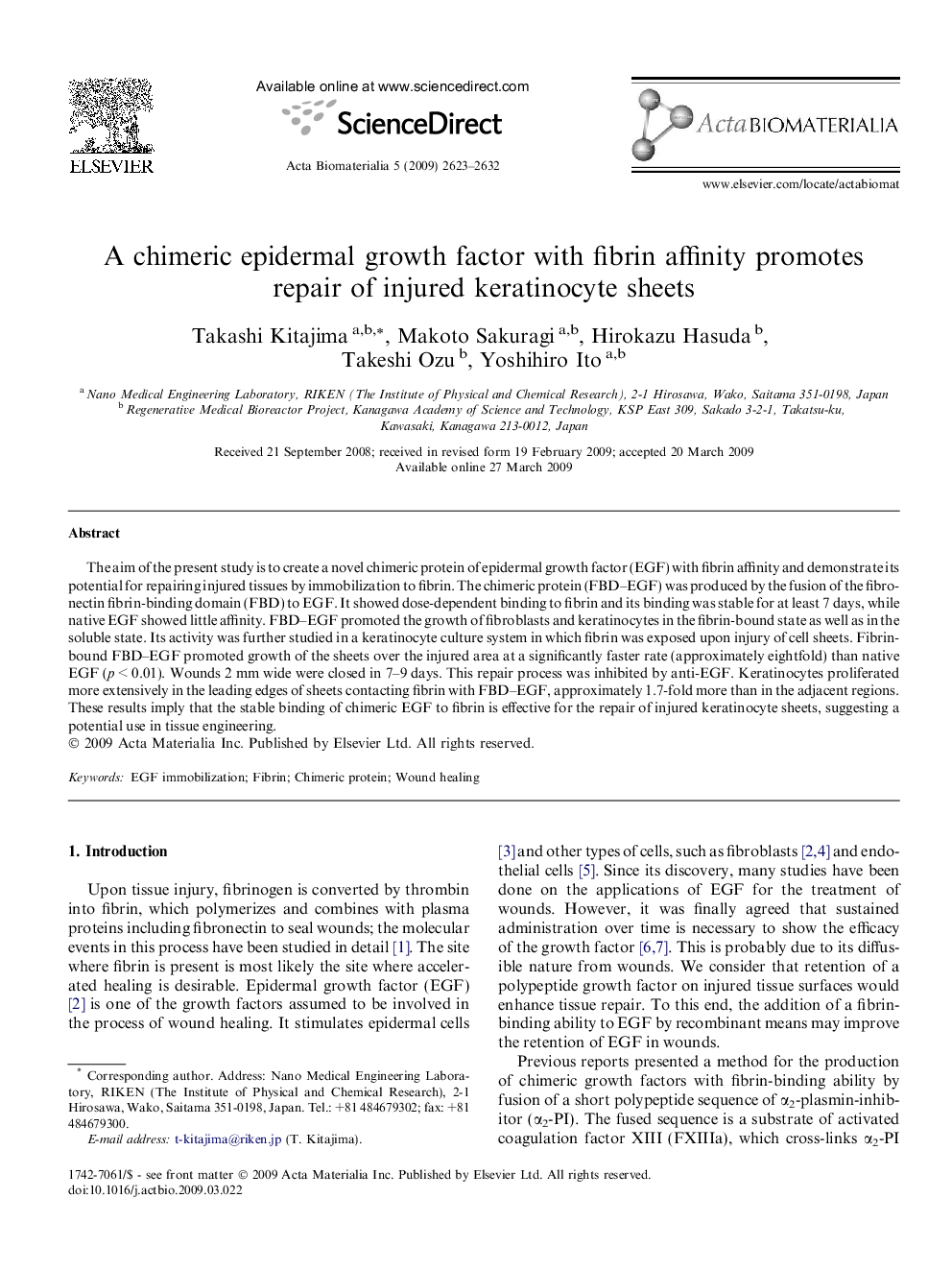| کد مقاله | کد نشریه | سال انتشار | مقاله انگلیسی | نسخه تمام متن |
|---|---|---|---|---|
| 1945 | 95 | 2009 | 10 صفحه PDF | دانلود رایگان |

The aim of the present study is to create a novel chimeric protein of epidermal growth factor (EGF) with fibrin affinity and demonstrate its potential for repairing injured tissues by immobilization to fibrin. The chimeric protein (FBD–EGF) was produced by the fusion of the fibronectin fibrin-binding domain (FBD) to EGF. It showed dose-dependent binding to fibrin and its binding was stable for at least 7 days, while native EGF showed little affinity. FBD–EGF promoted the growth of fibroblasts and keratinocytes in the fibrin-bound state as well as in the soluble state. Its activity was further studied in a keratinocyte culture system in which fibrin was exposed upon injury of cell sheets. Fibrin-bound FBD–EGF promoted growth of the sheets over the injured area at a significantly faster rate (approximately eightfold) than native EGF (p < 0.01). Wounds 2 mm wide were closed in 7–9 days. This repair process was inhibited by anti-EGF. Keratinocytes proliferated more extensively in the leading edges of sheets contacting fibrin with FBD–EGF, approximately 1.7-fold more than in the adjacent regions. These results imply that the stable binding of chimeric EGF to fibrin is effective for the repair of injured keratinocyte sheets, suggesting a potential use in tissue engineering.
Journal: Acta Biomaterialia - Volume 5, Issue 7, September 2009, Pages 2623–2632